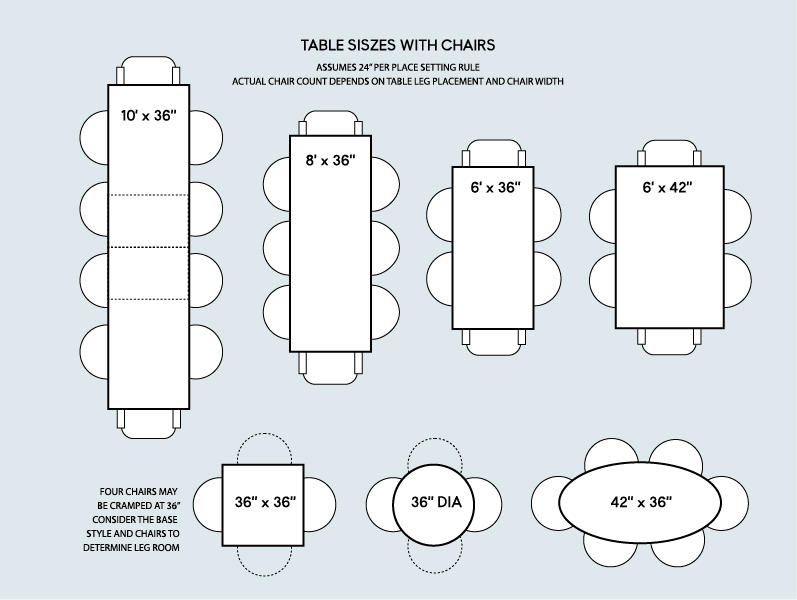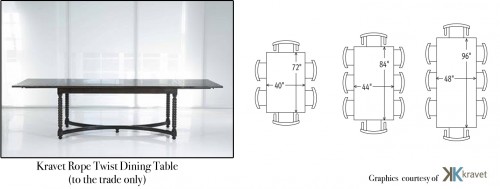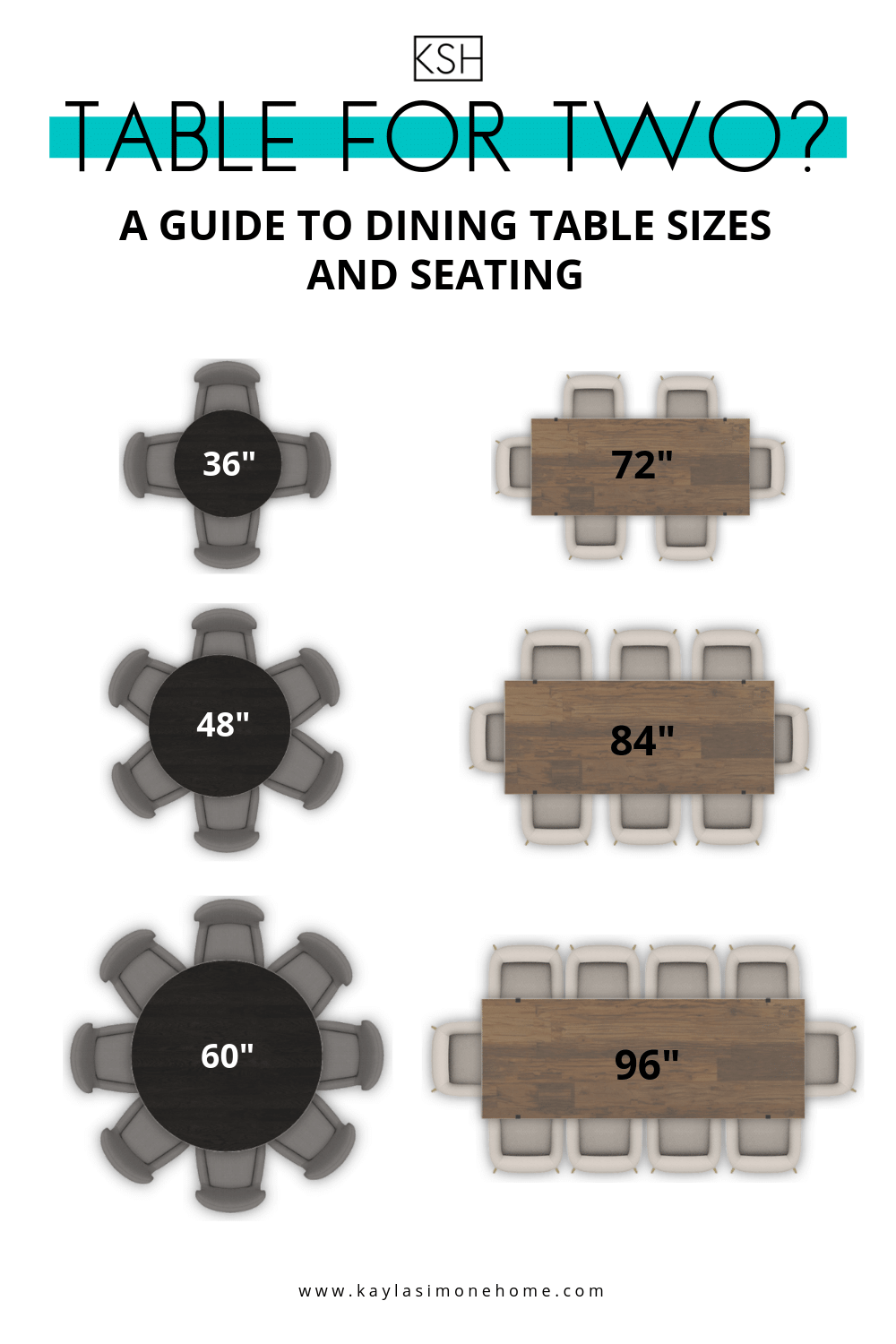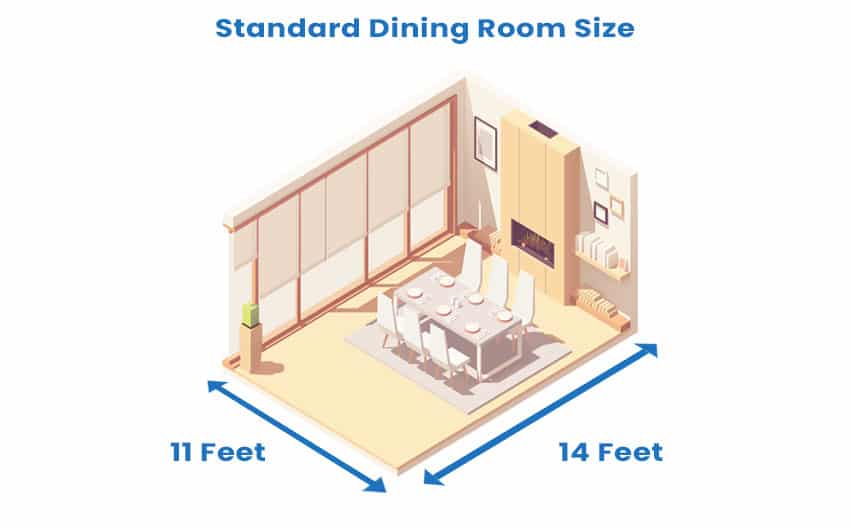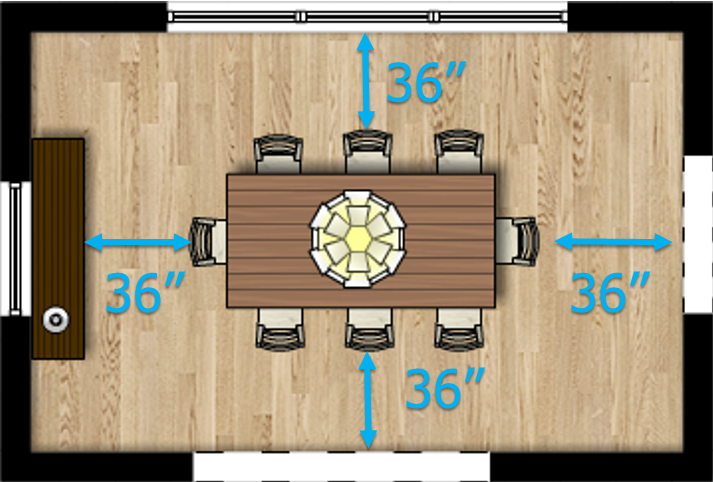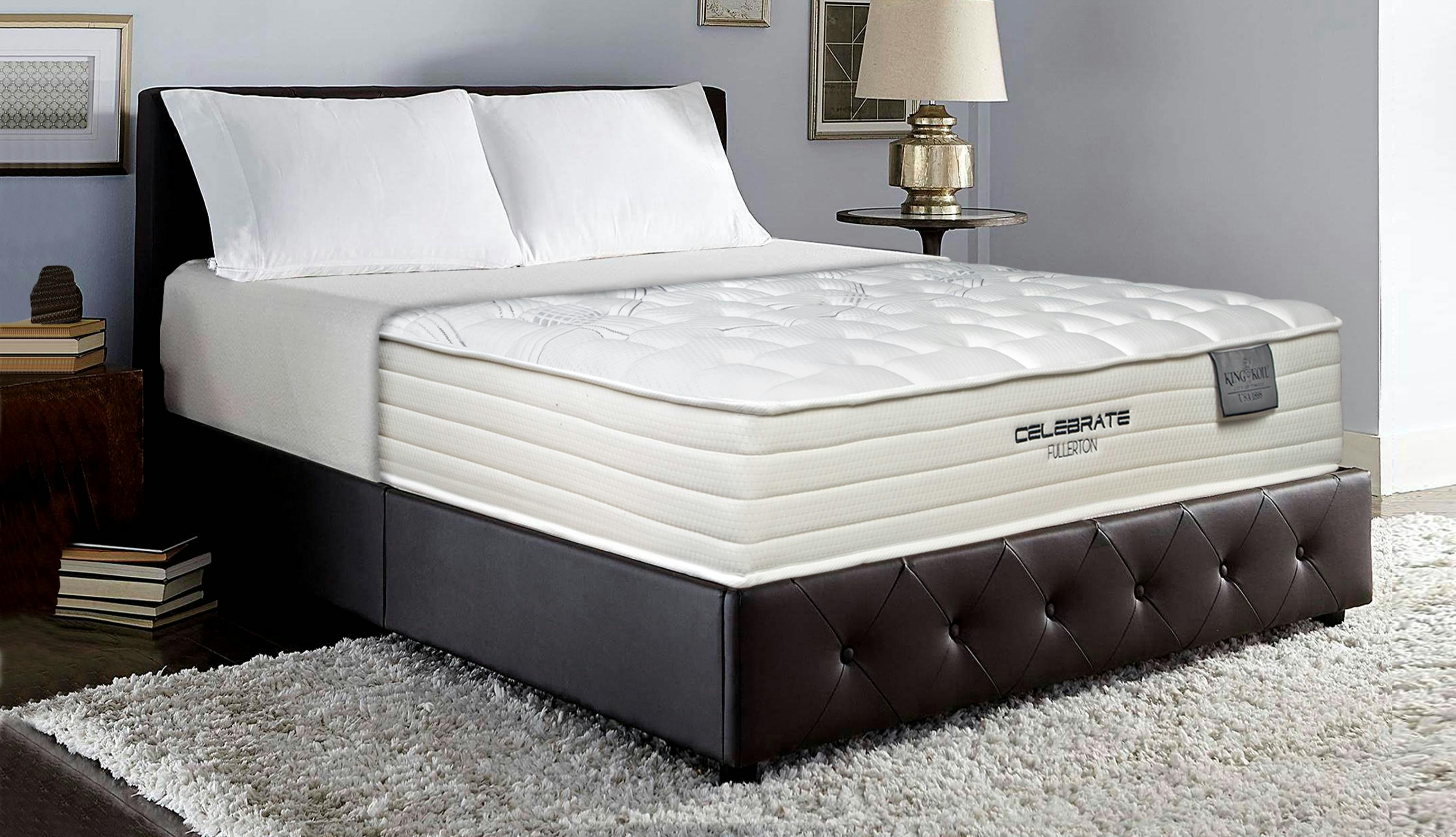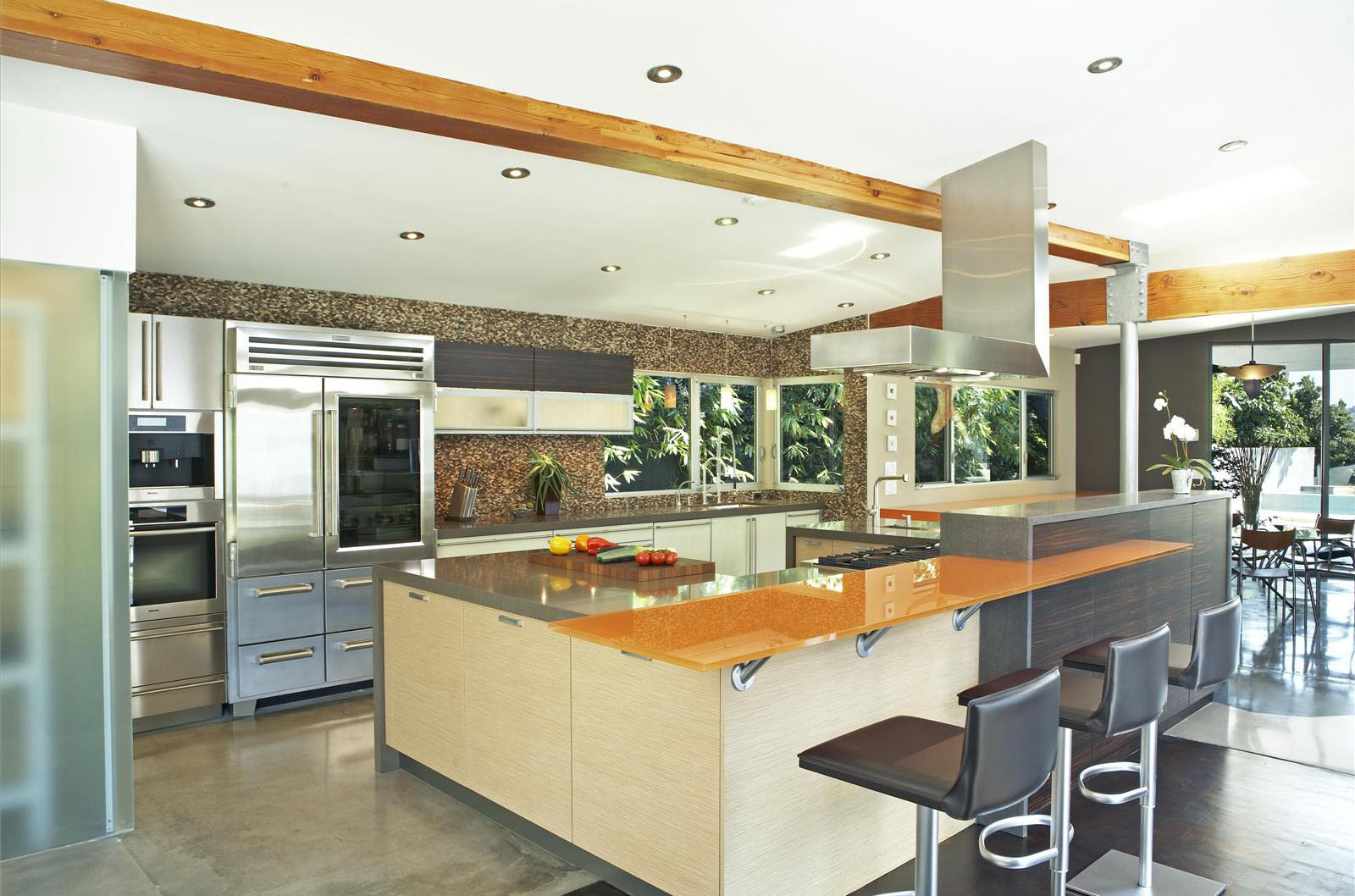When it comes to designing or renovating your dining room, one of the most important things to consider is the size of the space. The right dining room size can make all the difference in creating a functional and inviting space for family and friends to gather. But with so many different dining room size measurements out there, it can be overwhelming to know which one is the right fit. In this article, we will break down the top 10 main dining room size measurements and help you determine the ideal size for your dining room. Dining Room Size Measurements
The most common dining room size is approximately 12 feet by 12 feet (144 square feet). This is considered the standard size for a dining room and can comfortably fit a dining table, chairs, and a buffet or sideboard. However, this size may vary depending on the shape of the room and the layout of furniture. It's important to take into consideration the size of your dining table and chairs when determining the standard size for your dining room. Standard Dining Room Size
When determining the size of your dining room, it's important to understand the different dimensions that come into play. The most important dimensions to consider are the length and width of the room. The length refers to the longest side of the room, while the width is the shorter side. Additionally, you should also take into account the height of the room, as this can affect the overall feel of the space. Dining Room Dimensions
For those who are looking for a more precise measurement, you can use a dining room size calculator to determine the ideal size for your space. This tool takes into account the dimensions of your dining table, the number of chairs, and the space needed for people to comfortably move around the table. It's a great way to get an accurate measurement for your specific dining room needs. Dining Room Size Calculator
The average dining room size in the United States is approximately 14 feet by 16 feet (224 square feet). This size can comfortably fit a larger dining table, more chairs, and additional furniture such as a china cabinet or bar cart. However, this may not be the ideal size for every home, as it can vary depending on the layout and design of the space. Average Dining Room Size
There are a few things to keep in mind when using a dining room size guide. First, consider the shape of your dining room. A rectangular room will have different size requirements than a square or circular space. Additionally, consider the number of people you typically have for meals. If you frequently host large gatherings, you may need a larger dining room size to accommodate more guests. Dining Room Size Guide
To help you visualize the different dining room sizes, we've put together a handy dining room size chart. Keep in mind that these measurements are just a guide and may vary depending on your specific needs and preferences. The most important thing is to find a size that works for you and your dining habits. Table: Dining Room Size Chart Dining Room Size Chart
Now that you have a better understanding of the different dining room size measurements, it's time to measure your own dining room. The easiest way to do this is to use a measuring tape and record the length and width of the room. Be sure to also measure the height of the room if you are considering a taller dining table or hanging light fixture. You can also use the dining room size calculator mentioned earlier for a more precise measurement. How to Measure Dining Room Size
So, what is the ideal dining room size? The truth is, there is no one-size-fits-all answer. The ideal dining room size will vary depending on your personal preferences and needs. Some may prefer a cozy and intimate space, while others may want a larger room to accommodate more guests. It's important to find a size that works for you and your lifestyle. Ideal Dining Room Size
If you have a family of six or frequently entertain six people for meals, you may be wondering what the ideal dining room size is. In general, a room size of 12 feet by 14 feet (168 square feet) is recommended for a dining room that can comfortably fit six people. However, this may vary depending on the shape of your room and the size of your dining table and chairs. In conclusion, the size of your dining room is an important factor to consider when designing or renovating your space. By understanding the different dining room size measurements and using tools such as a dining room size calculator, you can determine the ideal size for your specific needs. Remember to also take into account your personal preferences and lifestyle when choosing the right dining room size for your home. Dining Room Size for 6
The Importance of Proper Dining Room Size Measurements in House Design
:max_bytes(150000):strip_icc()/standard-measurements-for-dining-table-1391316-FINAL-5bd9c9b84cedfd00266fe387.png)
Why Size Matters
 When it comes to designing a house, every room plays a crucial role in creating a functional and aesthetically pleasing space. However, the dining room often gets overlooked, with many homeowners assuming that any size will do. But the truth is, proper dining room size measurements are essential in creating a comfortable and inviting dining experience.
When it comes to designing a house, every room plays a crucial role in creating a functional and aesthetically pleasing space. However, the dining room often gets overlooked, with many homeowners assuming that any size will do. But the truth is, proper dining room size measurements are essential in creating a comfortable and inviting dining experience.
The Ideal Dining Room Size
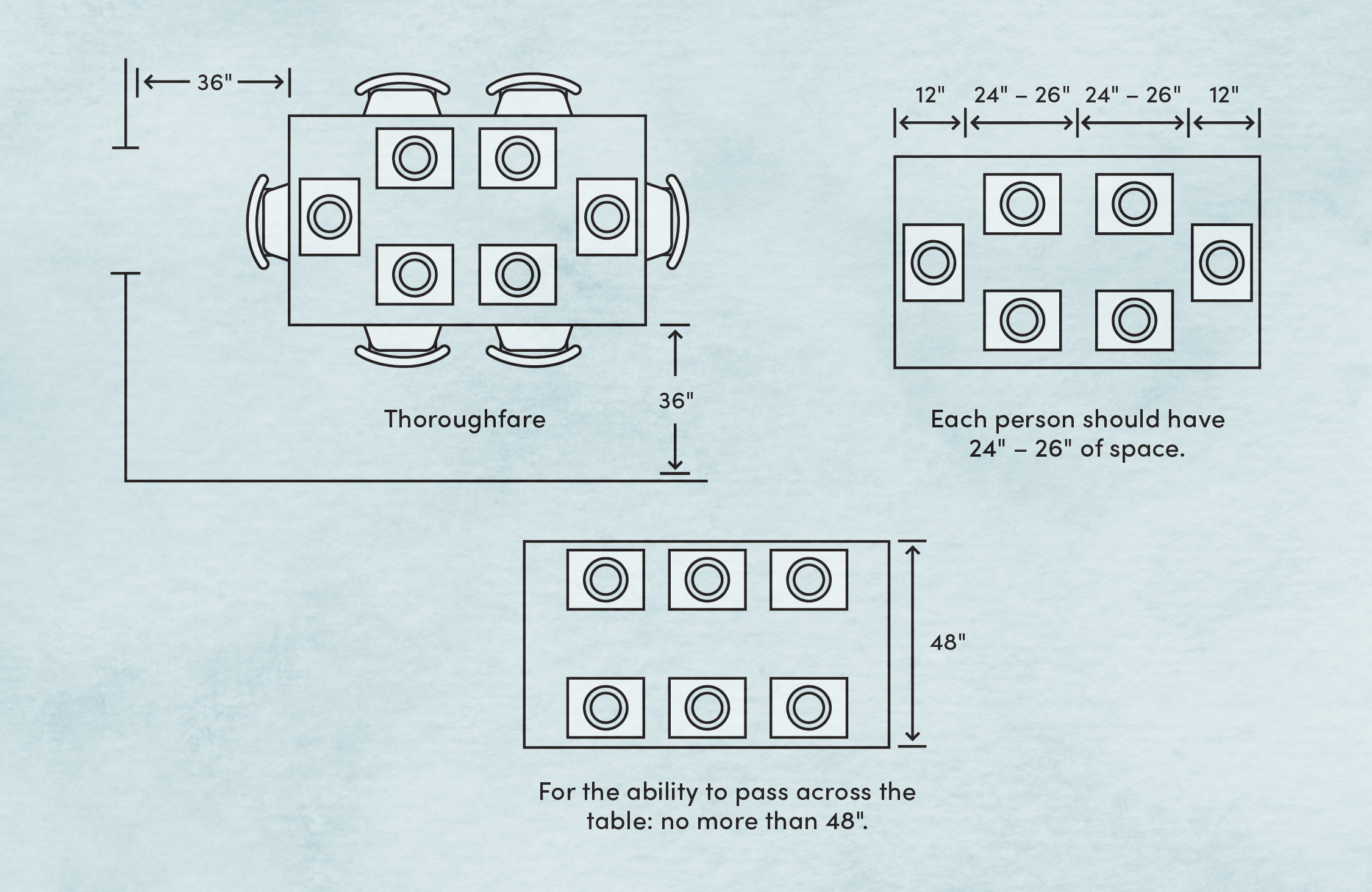 The ideal dining room size will depend on several factors such as the size of your family, the frequency of hosting guests, and the overall layout of your house. However, as a general rule, a dining room should be at least 12 feet by 12 feet, with enough space for a dining table and chairs, as well as room to move around comfortably. This size allows for easy movement and conversation during meals, creating a more enjoyable dining experience.
Pro tip:
If you have a larger family or frequently entertain guests, consider adding an additional 2 feet to the width and length of your dining room.
The ideal dining room size will depend on several factors such as the size of your family, the frequency of hosting guests, and the overall layout of your house. However, as a general rule, a dining room should be at least 12 feet by 12 feet, with enough space for a dining table and chairs, as well as room to move around comfortably. This size allows for easy movement and conversation during meals, creating a more enjoyable dining experience.
Pro tip:
If you have a larger family or frequently entertain guests, consider adding an additional 2 feet to the width and length of your dining room.
Consider the Flow of Your House
 When determining the size of your dining room, it's essential to consider the flow of your house. The dining room should be easily accessible from the kitchen, making it convenient to serve and clear dishes. It should also have a clear path from the entrance of the house to avoid any awkward or cramped space. Taking these factors into account will ensure a smooth and functional flow in your house.
When determining the size of your dining room, it's essential to consider the flow of your house. The dining room should be easily accessible from the kitchen, making it convenient to serve and clear dishes. It should also have a clear path from the entrance of the house to avoid any awkward or cramped space. Taking these factors into account will ensure a smooth and functional flow in your house.
Other Factors to Consider
 Aside from the size of the dining room itself, there are other factors to consider when designing the space.
Lighting
is crucial in creating a warm and inviting atmosphere, so make sure to incorporate both natural and artificial lighting in your dining room.
Storage
is also essential, especially if you have a smaller dining room. Consider incorporating built-in cabinets or a buffet to maximize storage space without taking up additional room. Lastly,
furniture
plays a significant role in the overall size of your dining room. Choosing the right size and shape of your dining table and chairs is crucial in creating a comfortable and functional space.
Aside from the size of the dining room itself, there are other factors to consider when designing the space.
Lighting
is crucial in creating a warm and inviting atmosphere, so make sure to incorporate both natural and artificial lighting in your dining room.
Storage
is also essential, especially if you have a smaller dining room. Consider incorporating built-in cabinets or a buffet to maximize storage space without taking up additional room. Lastly,
furniture
plays a significant role in the overall size of your dining room. Choosing the right size and shape of your dining table and chairs is crucial in creating a comfortable and functional space.
In Conclusion
 In conclusion, proper dining room size measurements are crucial in creating a functional and inviting dining experience. Consider the size of your family, the flow of your house, and other factors such as lighting, storage, and furniture when designing your dining room. By taking these factors into account, you can ensure that your dining room is the perfect size for your needs and enhances the overall design of your house.
In conclusion, proper dining room size measurements are crucial in creating a functional and inviting dining experience. Consider the size of your family, the flow of your house, and other factors such as lighting, storage, and furniture when designing your dining room. By taking these factors into account, you can ensure that your dining room is the perfect size for your needs and enhances the overall design of your house.



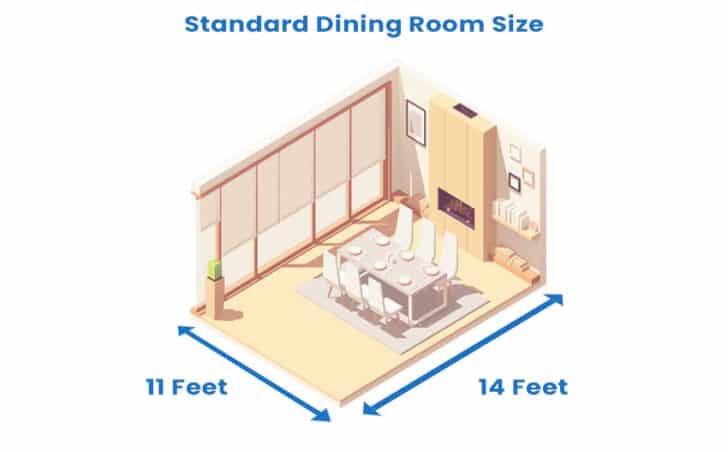



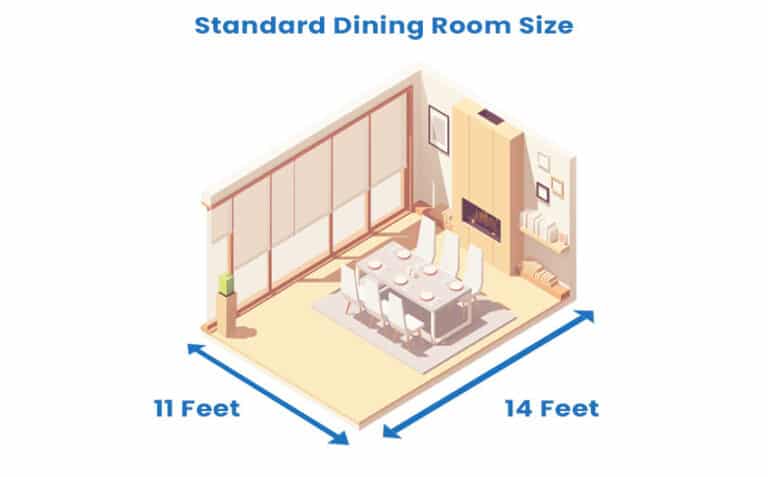





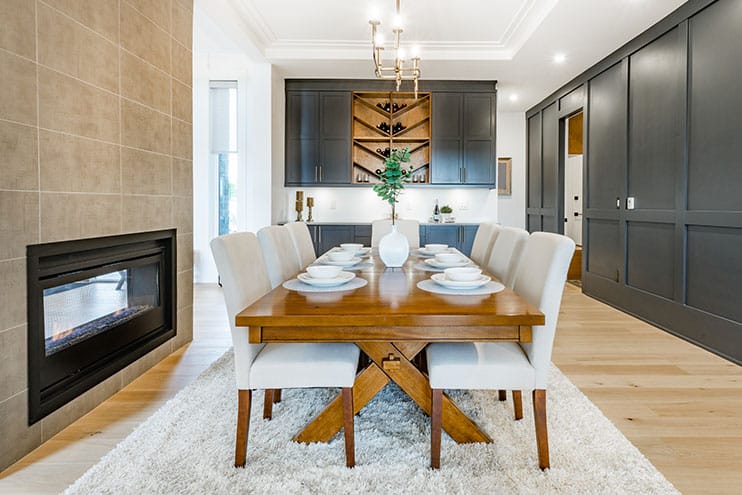

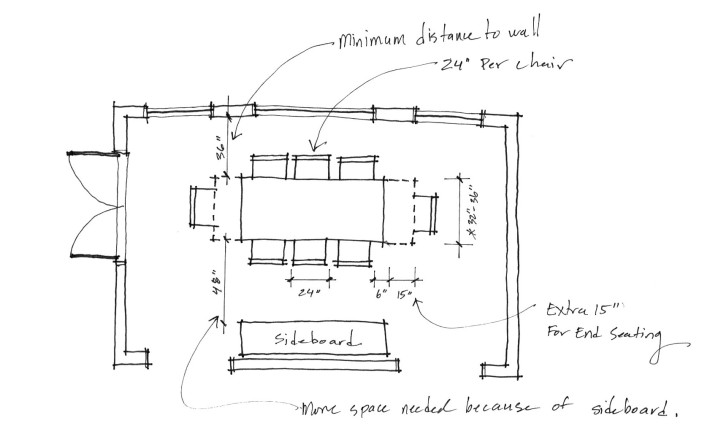


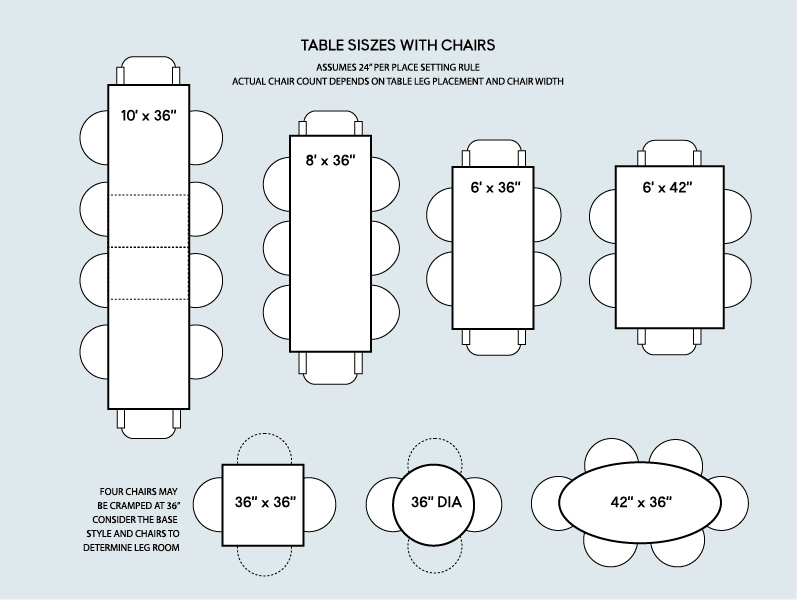





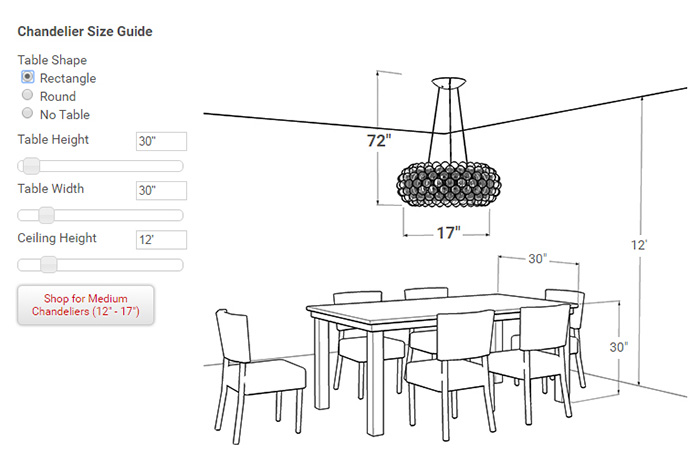





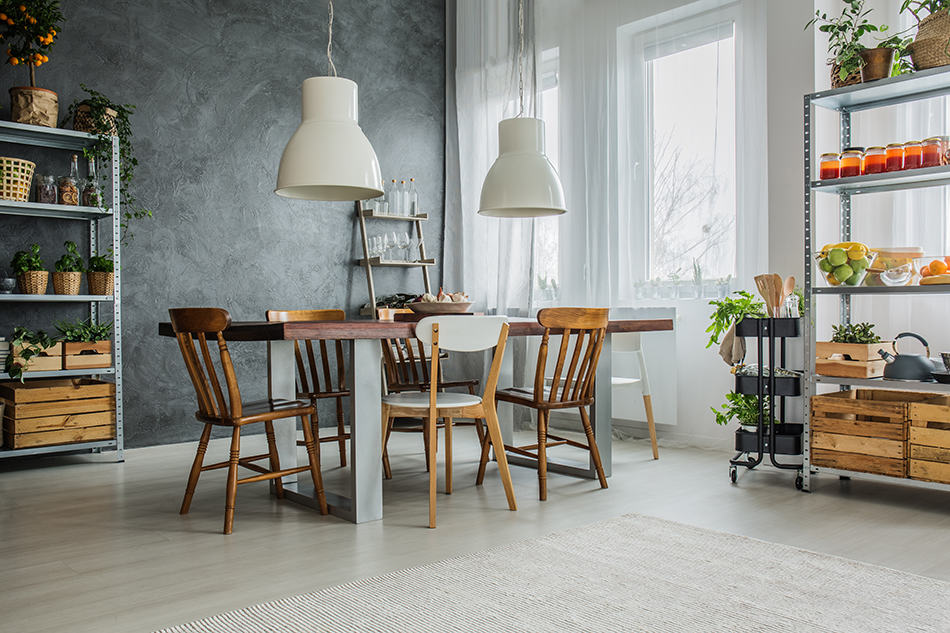





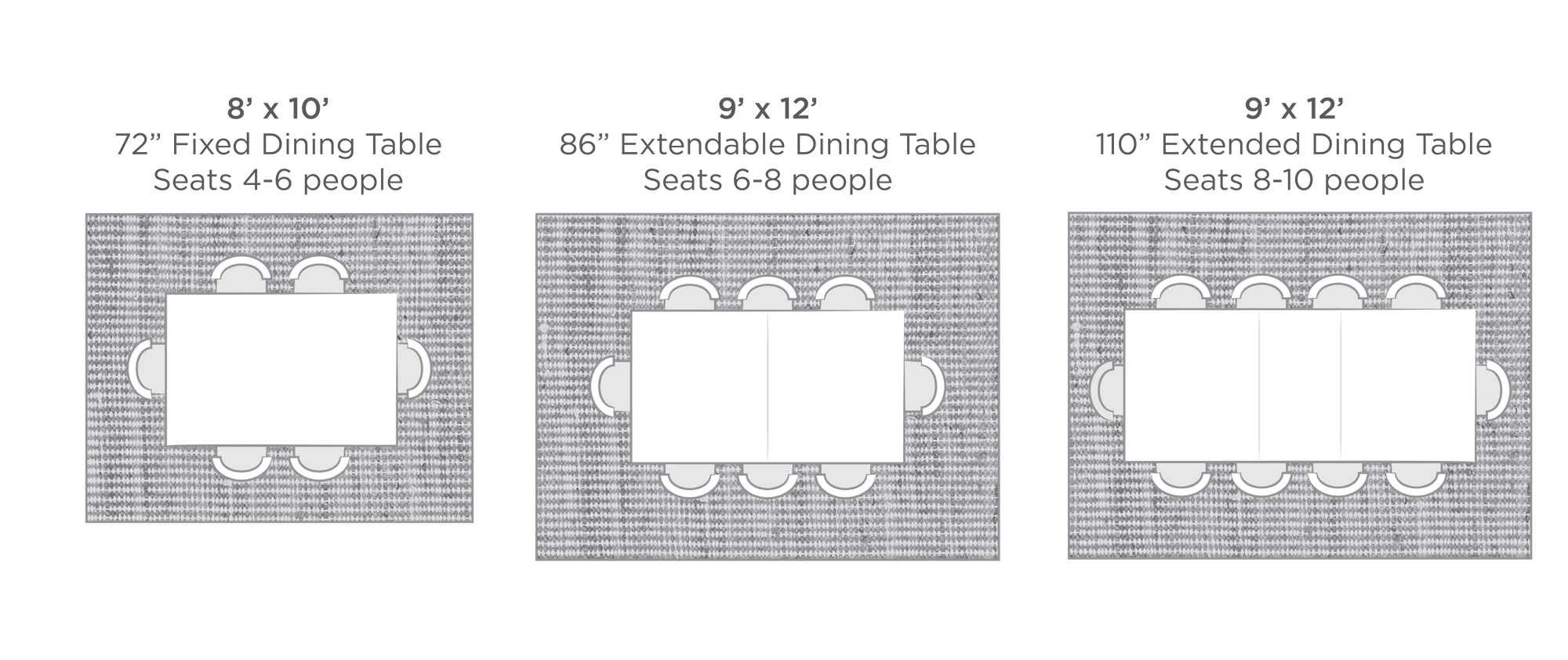



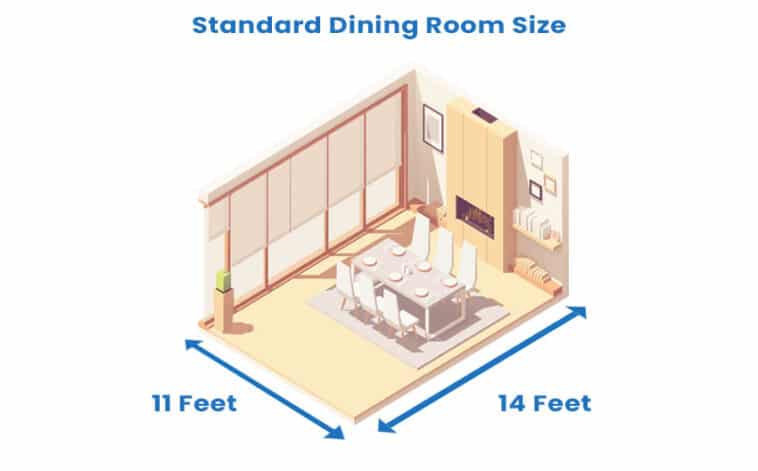

:max_bytes(150000):strip_icc()/how-to-choose-chairs-for-your-dining-table-1313436_final-5becb148e0e04b3198d96933fbad52ec.png)








